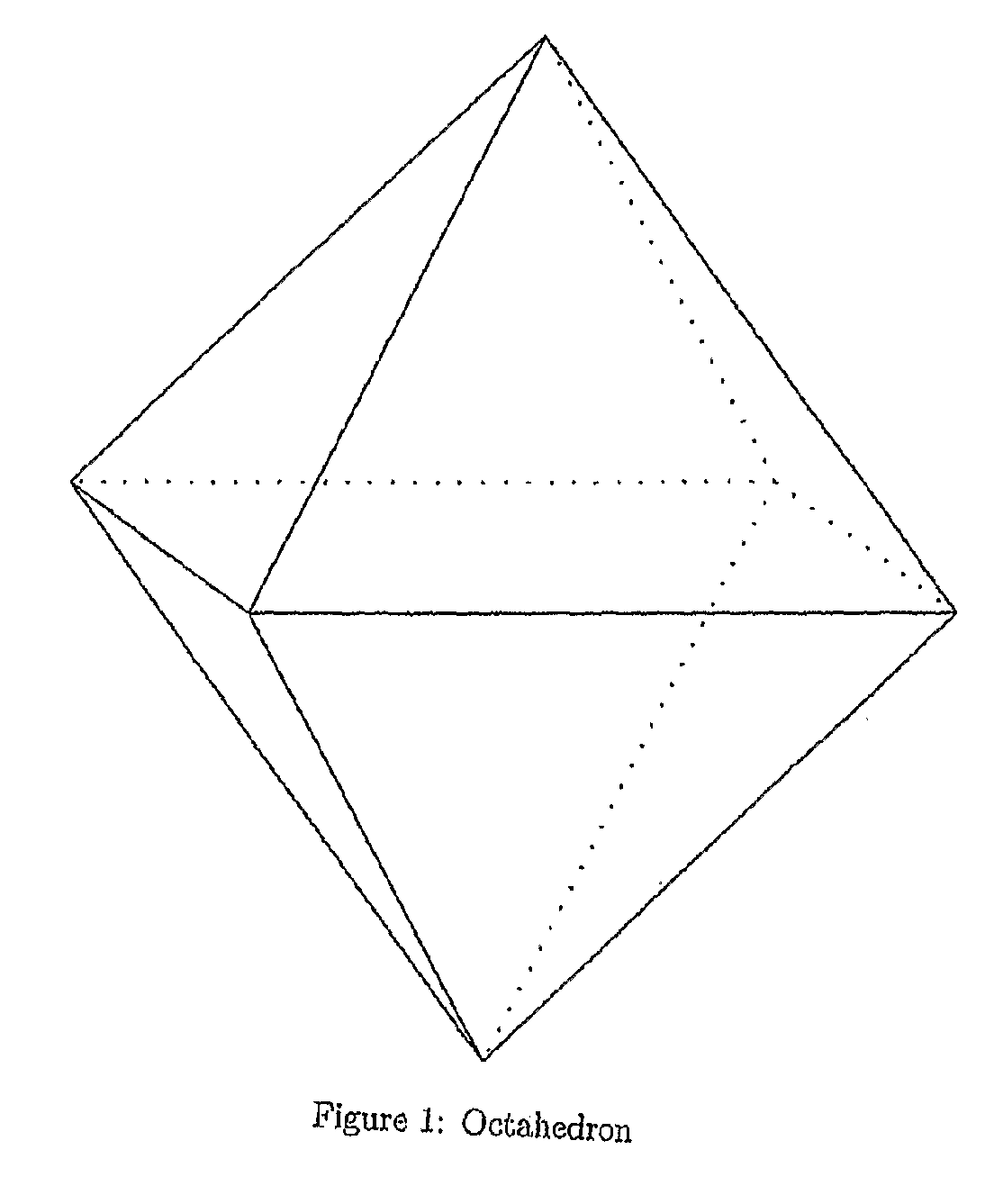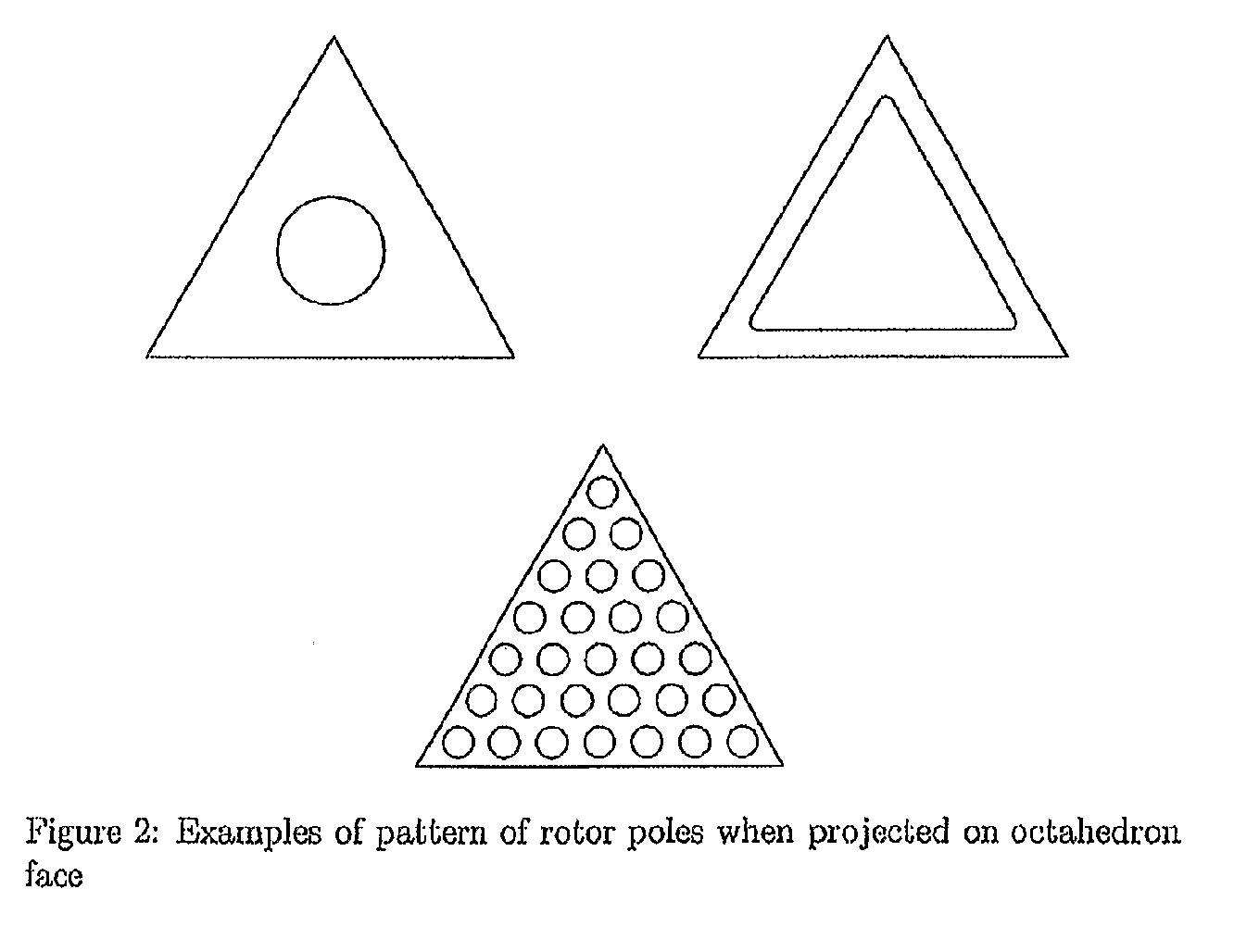Torquer Apparatus
a technology of torquer and torquer, which is applied in the direction of single motor speed/torque control, dynamo-electric machines, synchronous motor starters, etc., can solve the problems of total momentum, force the wheels or the sphere to spin at their maximum angular velocity, and not available as commercial products, so as to achieve excellent efficiency.
- Summary
- Abstract
- Description
- Claims
- Application Information
AI Technical Summary
Benefits of technology
Problems solved by technology
Method used
Image
Examples
Embodiment Construction
[0022]The reaction-gyro sphere may consist of a nominally concentric assembly of an essentially spherical rotor and an essentially spherical stator. As far as the dynamic is concerned, the stator may actually be part of the vehicle body. The apparatus is also called a torquer, since its function is to export torque to the vehicle. As a reaction to the exported torque, the vehicle momentum is changed and the attitude eventually controlled.
[0023]For a large vehicle, the rotor is usually contained in the stator. To increase the rotor moment of inertia without increasing weight, the rotor can be made hollow. For a small vehicle, like an agile satellite, the opposite arrangement may be considered, i.e., with the stator (and the vehicle) contained in the rotor. In this case, the rotor may have to be designed such as to show large open portions, so as not to disturb significantly the satellite functions requiring access to the external space.
[0024]As opposed to U.S. Pat. No. 5,798,590 pate...
PUM
 Login to View More
Login to View More Abstract
Description
Claims
Application Information
 Login to View More
Login to View More - R&D
- Intellectual Property
- Life Sciences
- Materials
- Tech Scout
- Unparalleled Data Quality
- Higher Quality Content
- 60% Fewer Hallucinations
Browse by: Latest US Patents, China's latest patents, Technical Efficacy Thesaurus, Application Domain, Technology Topic, Popular Technical Reports.
© 2025 PatSnap. All rights reserved.Legal|Privacy policy|Modern Slavery Act Transparency Statement|Sitemap|About US| Contact US: help@patsnap.com



